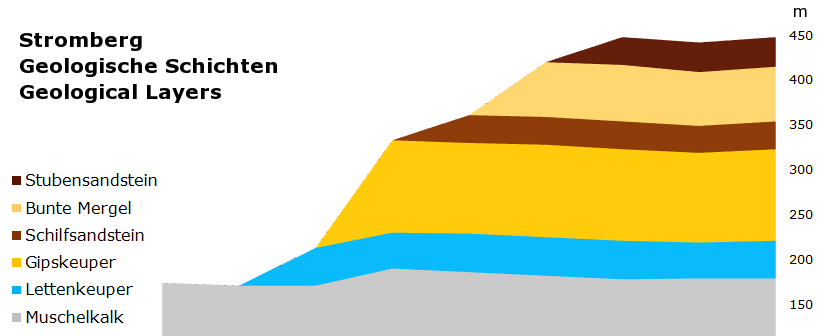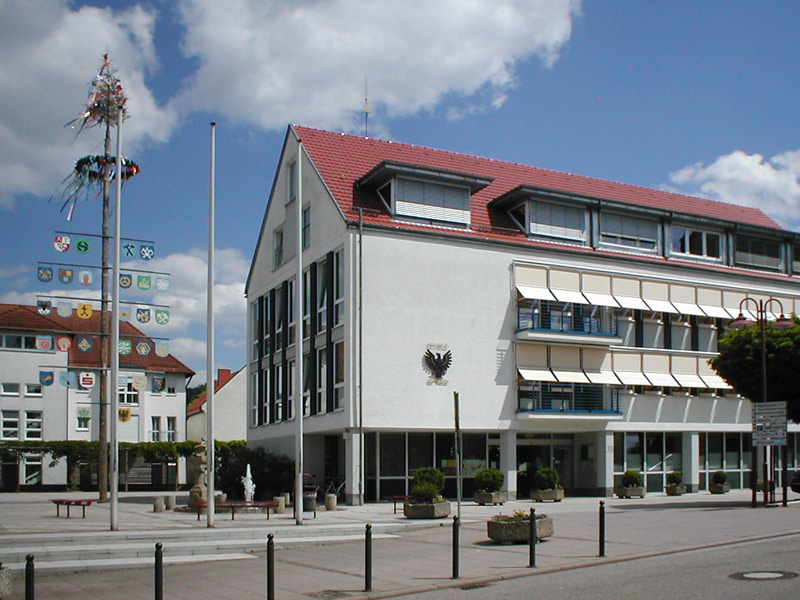|
Kraichgau
The Kraichgau () is a hilly region in Baden-Württemberg, southwestern Germany. It is bordered by the Odenwald and the Neckar to the North, the Black Forest to the South, and the Upper Rhine Plain to the West. To the east, its boundary is considered to be the Stromberg and the Heuchelberg. The largest towns of the Kraichgau are Sinsheim, Eppingen, and Bretten. On the western end of the Kraichgau is the town of Bruchsal, the gateway to the Rhineland plains. Origins of the name The word "Kraich" apparently arose from the Celtic word "Creuch," meaning "mud" or "loam." The territory of a Gau (country subdivision) signifies an open area, free from woods, such as farmland or meadows. The area of Kraichgau was first mentioned in the Early Middle Ages, in the Lorsch codex The Lorsch Codex (Chronicon Laureshamense, Lorscher Codex, Codex Laureshamensis) is an important historical document created between about 1175 to 1195 AD in the Monastery of Saint Nazarius in Lorsch ... [...More Info...] [...Related Items...] OR: [Wikipedia] [Google] [Baidu] |
Stromberg (landscape)
The Stromberg is a heavily forested hill ridge up to in the northern part of the German state of Baden-Württemberg. [Baidu] |
Waibstadt - Altstadt - Stadtpfarrkirche - Ansicht Von Osten (1)
Waibstadt () is a town in the district of Rhein-Neckar-Kreis, in Baden-Württemberg, Germany. It belongs to the municipal administration union "Waibstadt", which consists of Epfenbach, Helmstadt-Bargen, Neckarbischofsheim, Neidenstein, Reichartshausen and Waibstadt itself. Furthermore, it is part of the touristic region Brunnenregion. Geography Geographic location Waibstadt is located in the valley of the Schwarzbach in the northern Kraichgau, about 25 km southeast of Heidelberg and about 6 km north of Sinsheim. Neighbour municipalities The town is surrounded in the northwest by Neidenstein, in the north by Epfenbach, in the northeast by Helmstadt-Bargen, in the east by Neckarbischofsheim, in the south by Sinsheim and in the west by Zuzenhausen and Eschelbronn. Parts of town Besides the main town Waibstadt, the two villages Daisbach and Bernau are part of Waibstadt. History The first documented mentioning date at 795 AD, but there are indications, ... [...More Info...] [...Related Items...] OR: [Wikipedia] [Google] [Baidu] |
Eppingen
Eppingen () is a town in the district of Heilbronn in Baden-Württemberg in southern Germany. The town has the second-largest population in the district. Eppingen lies in the Kraichgau, a hilly region in southwestern Germany, close to the confluence of the Elsenz and Hilsbach Rivers. History Eppingen was first mentioned in 985 when Otto III gave the settlement to the diocese of Worms. The ending "-ingen" was common for towns colonised by the Alamanni clan in the 3rd and 4th centuries. Eppingen was owned by Salier in the 11th century, and by the Staufer in the 12th century. In 1188, it became a fortified village and, in 1192, a town, elevated by Heinrich VI. The town was distrained several times in the 14th century, but never lost the status of a town. After the win of the Electorate of the Palatinate over margraviate Baden in 1435, it finally became a part of the Electorate of the Palatinate but was once more distrained to the knights of Gemmingen, from 1469 to approximatel ... [...More Info...] [...Related Items...] OR: [Wikipedia] [Google] [Baidu] |
Bruchsal
Bruchsal (; orig. Bruohselle, Bruaselle, historically known in English as Bruxhall; South Franconian: ''Brusel'') is a city at the western edge of the Kraichgau, approximately 20 km northeast of Karlsruhe in the state of Baden-Württemberg, Germany. It is located on Bertha Benz Memorial Route. Bruchsal is the largest city in the district of Karlsruhe and is known for being Europe's largest asparagus producer and one of the economic centers of the region of Karlsruhe. The Bruchsal area also includes the cities and towns of Bad Schönborn, Forst, Hambrücken, Karlsdorf-Neuthard, Kraichtal, Kronau, Oberhausen-Rheinhausen, Östringen, Philippsburg, Ubstadt-Weiher and Waghäusel. Until 1972 Bruchsal was the seat of the district of Bruchsal, which was merged into the district of Karlsruhe as a result of the district reform, effective January 1, 1973. Bruchsal's population passed the 20,000 mark around 1955. When the new Body of Municipal Law for Baden-Württemberg ... [...More Info...] [...Related Items...] OR: [Wikipedia] [Google] [Baidu] |
Aalkistensee
Aalkistensee is a lake in Kraichgau, Baden-Württemberg, Germany Germany,, officially the Federal Republic of Germany, is a country in Central Europe. It is the second most populous country in Europe after Russia, and the most populous member state of the European Union. Germany is situated betwe .... At an elevation of ca 250 m, its surface area is 0.136 km2. Lakes of Baden-Württemberg {{BadenWurttemberg-geo-stub ... [...More Info...] [...Related Items...] OR: [Wikipedia] [Google] [Baidu] |
Black Forest
The Black Forest (german: Schwarzwald ) is a large forested mountain range in the state of Baden-Württemberg in southwest Germany, bounded by the Rhine Valley to the west and south and close to the borders with France and Switzerland. It is the source of the Danube and Neckar rivers. Its highest peak is the Feldberg with an elevation of above sea level. Roughly oblong in shape, with a length of and breadth of up to , it has an area of about 6,009 km2 (2,320 sq mi). Historically, the area was known for forestry and the mining of ore deposits, but tourism has now become the primary industry, accounting for around 300,000 jobs. There are several ruined military fortifications dating back to the 17th century. History In ancient times, the Black Forest was known as , after the Celtic deity, Abnoba. In Roman times (Late antiquity), it was given the name ("Marcynian Forest", from the Germanic word ''marka'' = "border"). The Black Forest probably represented the bo ... [...More Info...] [...Related Items...] OR: [Wikipedia] [Google] [Baidu] |
Bretten
Bretten (; South Franconian: ''Bredde'') is a town in the state of Baden-Württemberg, Germany. It is located on Bertha Benz Memorial Route. Geography Bretten lies in the centre of a rectangle that is formed by Heidelberg, Karlsruhe, Heilbronn and Stuttgart as corners. It has a population of approximately 28,000. The centre of Bretten consists of many old half-timbered houses around a lively marketplace. Towns and villages under the administration of Bretten include Bauerbach, Büchig, Diedelsheim, Dürrenbüchig, Gölshausen, Neibsheim, Rinklingen, Ruit and Sprantal. History Bretten was first mentioned as "villa breteheim" in the "Lorsch codex" in 767. Since 1148 Bretten had the right to mint and issue coins. In 1254 Bretten received city rights. In 1492 Bretten was granted to hold four fairs by Pfalzgraf Philipp. Philipp Melanchthon was born in Bretten in 1497. The residents of Bretten successfully sallied against the Swabian besiegers around Ulrich of Württemberg in 1504 ... [...More Info...] [...Related Items...] OR: [Wikipedia] [Google] [Baidu] |
Gau (country Subdivision)
''Gau'' (German , nl, gouw , fy, gea or ''goa'' ) is a Germanic term for a region within a country, often a former or current province. It was used in the Middle Ages, when it can be seen as roughly corresponding to an English shire. The administrative use of the term was revived as a subdivision during the period of Nazi Germany in 1933–1945. It still appears today in regional names, such as the Rheingau or Allgäu. Middle Ages Etymology The Germanic word is reflected in Gothic ''gawi'' (neuter; genitive ''gaujis'') and early Old High German ''gewi, gowi'' (neuter) and in some compound names ''-gawi'' as in Gothic (e.g. ''Durgawi'' "Canton of Thurgau", ''Alpagawi'' "Allgäu"), later ''gâi, gôi'', and after loss of the stem suffix ''gaw, gao'', and with motion to the feminine as ''gawa'' besides ''gowo'' (from ''gowio''). Old Saxon shows further truncation to ''gâ, gô''. As an equivalent of Latin ''pagus'', a ''gau'' is analogous with a ''pays'' of the Kingdom of F ... [...More Info...] [...Related Items...] OR: [Wikipedia] [Google] [Baidu] |
Odenwald
The Odenwald () is a low mountain range in the German states of Hesse, Bavaria and Baden-Württemberg. Location The Odenwald is located between the Upper Rhine Plain with the Bergstraße and the ''Hessisches Ried'' (the northeastern section of the Rhine rift) to the west, the Main and the Bauland (a mostly unwooded area with good soils) to the east, the Hanau-Seligenstadt Basin – a subbasin of the Upper Rhine Rift Valley in the Rhine-Main Lowlands – to the north and the Kraichgau to the south. The part south of the Neckar valley is sometimes called the ''Kleiner Odenwald'' ("Little Odenwald"). The northern and western Odenwald belong to southern Hesse, with the south stretching into Baden. In the northeast, a small part lies in Lower Franconia in Bavaria. Geology The Odenwald, along with other parts of the Central German Uplands, belongs to the Variscan, which more than 300 million years ago in the Carboniferous period ran through great parts of Europe. The cause o ... [...More Info...] [...Related Items...] OR: [Wikipedia] [Google] [Baidu] |
Neckar
The Neckar () is a river in Germany, mainly flowing through the southwestern state of Baden-Württemberg, with a short section through Hesse. The Neckar is a major right tributary of the Rhine. Rising in the Schwarzwald-Baar-Kreis near Schwenningen in the ''Schwenninger Moos'' conservation area at a height of above sea level, it passes through Rottweil, Rottenburg am Neckar, Kilchberg, Tübingen, Wernau, Nürtingen, Plochingen, Esslingen, Stuttgart, Ludwigsburg, Marbach, Heilbronn and Heidelberg, before discharging on average of water into the Rhine at Mannheim, at above sea level, making the Neckar its 4th largest tributary, and the 10th largest river in Germany. Since 1968, the Neckar has been navigable for cargo ships via 27 locks for about upstream from Mannheim to the river port of Plochingen, at the confluence with the Fils. From Plochingen to Stuttgart, the Neckar valley is densely populated and heavily industrialised, with several well-known companies. Betw ... [...More Info...] [...Related Items...] OR: [Wikipedia] [Google] [Baidu] |
Sinsheim
Sinsheim (, South Franconian: ''Sinse'') is a town in south-western Germany, in the Rhine Neckar Area of the state Baden-Württemberg about south-east of Heidelberg and about north-west of Heilbronn in the district Rhein-Neckar. Geography Overview Sinsheim consists of a town centre and 12 suburbs with a total population of 35,373 (as of December 2011). Its area encompasses . The Elsenz, an unnavigable left-bank tributary of the Neckar, flows through the town, reaching the Neckar at Neckargemünd. Subdivisions The list below shows the 12 suburban villages (''Stadtteile''). Population data was as of 31 December 2020 and the one of Sinsheim (the town proper) was of 12,914. History The region around Sinsheim has been settled since 700,000 BC, as shown by the finding of the fossil ''Homo heidelbergensis'' in the village of Mauer, about 12 km (7 miles) north of Sinsheim. The Romans ruled the area from 90 AD to 260 AD. The city was possibly founded in about 550 AD by ... [...More Info...] [...Related Items...] OR: [Wikipedia] [Google] [Baidu] |
Lorsch Codex
The Lorsch Codex (Chronicon Laureshamense, Lorscher Codex, Codex Laureshamensis) is an important historical document created between about 1175 to 1195 AD in the Monastery of Saint Nazarius in Lorsch, Germany. The codex is handwritten in Carolingian minuscule, and contains illuminated initials – for example, a huge "D" is presented on the first page. The codex consists of 460 pages in large format containing more than 3800 entries. It is important because it details the gifts given to the monastery and the possessions belonging to it, giving some of the first mention of cities of the Middle Ages in central Germany, and in particular in the Rhein-Neckar region. Over one thousand places are named. None of the original documents that were copied into the codex are known to have survived. The codex is now in the Bavarian state archive in Münich. Literature *''Codex Laureshamensis. Das Urkundenbuch des ehemaligen Reichsklosters Lorch'', Neustadt/Aisch 2003 (Bavarian State Ar ... [...More Info...] [...Related Items...] OR: [Wikipedia] [Google] [Baidu] |









